A behind-the-scenes look at the new Audi A8’s ‘Godzilla’ 3D sound system
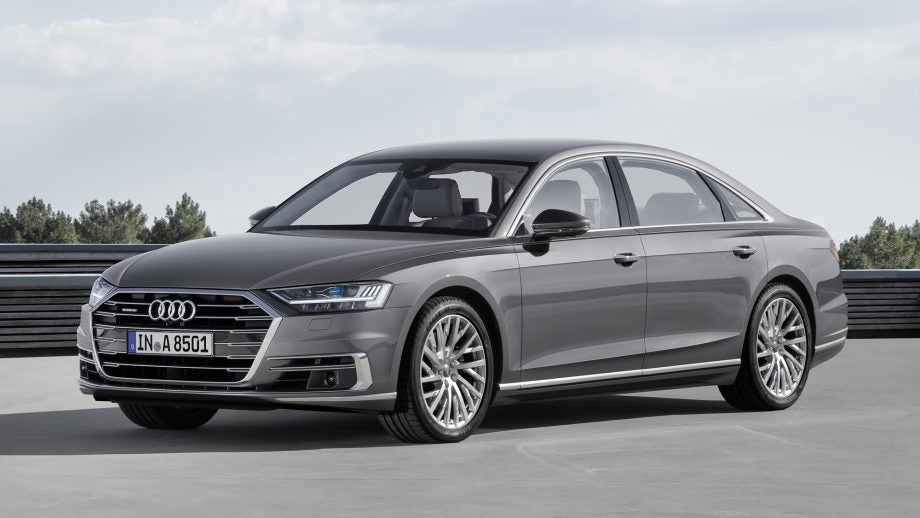
The new Audi A8 2017 is the most advanced addition to the German automaker’s car range yet, featuring a world-class sound system to boot. Trusted Reviews takes a rare inside look at the sound lab at Audi’s Ingolstadt HQ to find out how it works.
When Audi unveiled the new Audi A8 last month, wealthy executives squealed with glee the world over. A far cry from the boxy sedan of 1994 origins, the new A8 is the crème-de-la-crème of Audi’s luxury vehicles, and it comes with all the bells and whistles you’d expect. From a 17-foot wheelbase to a semi-autonomous driving system, it’s an imposing feat of vehicular engineering – but the sound system is what Audi is really making noise about.
Trusted Reviews got a rare opportunity to go behind closed doors at Audi’s headquarters in Germany – which houses an incredible 44,000 employees, sprawls over 29.5 million square-feet, and turns out nearly 600,000 vehicles a year – to meet the team that designed the new A8’s impressive sound system, and learn what it takes to create top-end car audio.
Unsurprisingly, it’s painstaking work.
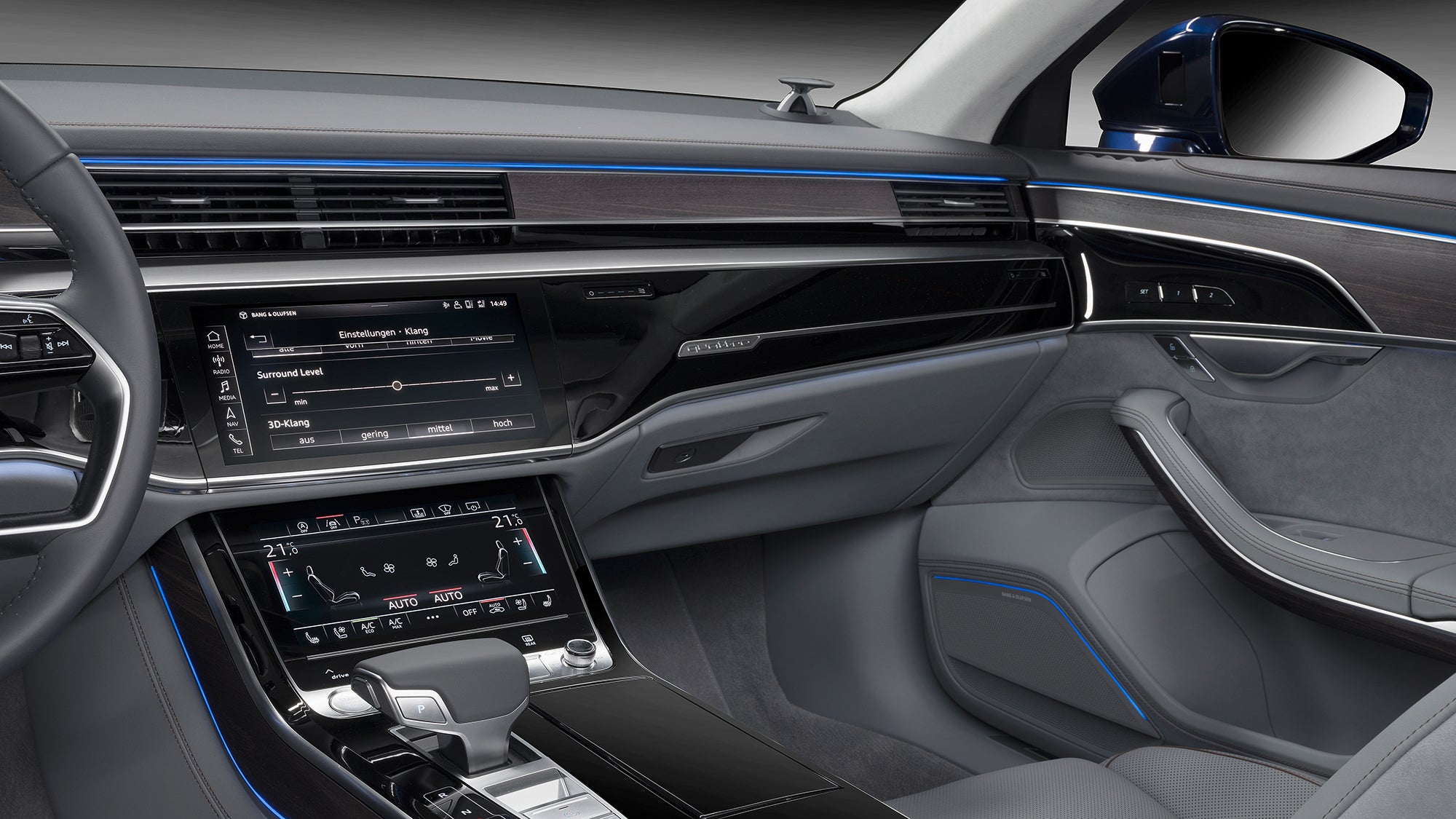
Credit: Audi
Building car sound systems is ‘another planet’
The most advanced version of the new Audi A8’s sound system was built in partnership with audio experts from Bang & Olufsen. Together, the teams created what they reckon is a genuine 3D sound system that makes you feel as though you’re in an orchestra hall – rather than the back seat of a full-size sedan.
To do this, Audi sourced 23 loudspeakers for every Audi A8 from ASK – an Italian speaker firm – each of which were then tuned in-house by Audi experts.
These speakers are dotted all around the car; woofers (which are individually boxed, for minimum noise leakage) are housed in all four doors, while a huge sub-woofer resides in the rear shelf. There are even several speakers built directly in the ceiling, for mid-to-high frequency audio from above.
The problem, Audi’s experts explain, is that unlike a studio or concert hall, a car is one of the worst possible environments for designing a quality audio setup.
Related: Range Rover Velar
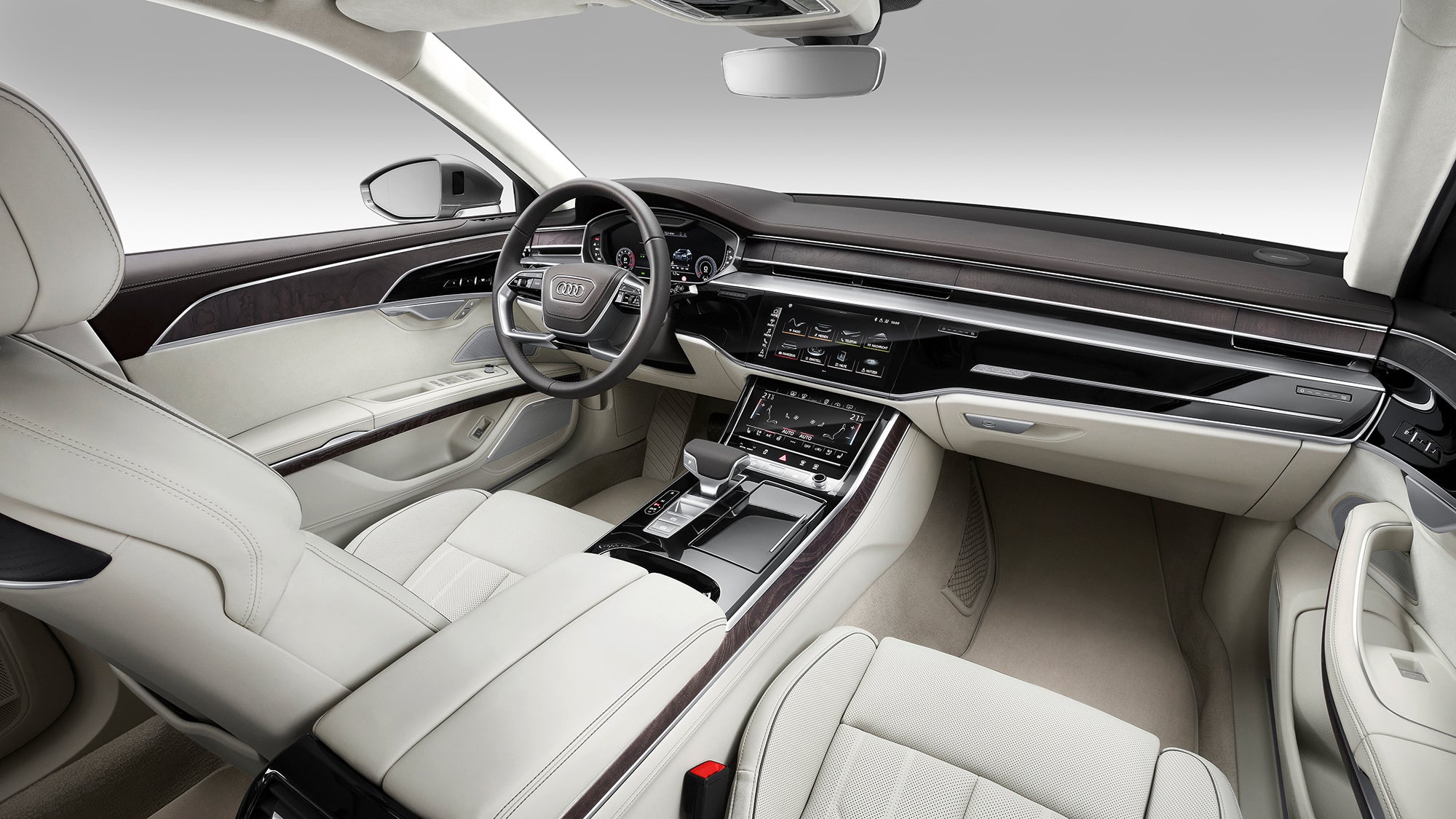
Credit: Audi
“It’s difficult in every way,” Thomas Ott, an acoustics expert at Audi, speaking exclusively to Trusted Reviews. “The room, the reflections, the glass. It’s another planet, you know. And that’s interesting for working because every new car is another planet. You can’t use the same system in every car.”
In fact, Audi even commissioned a brand new algorithm – the Fraunhofer Symphonia 2.0 3D algorithm – for the Audi A8 to make sure it sounded better than any Audi ever built to date. This algorithm was designed by Germany’s prestigious Fraunhofer Institute, and I’m told it will almost certainly feature in future Audi vehicles.
Designing great audio doesn’t come cheap
Audi benefits from the scale of its operations. Unlike smaller car makers, Audi has plenty of cash to splash; last year in made a pre-tax profit of €1.5 billion and generated over €50 billion in revenue. This means it can invest in serious sound infrastructure.
For instance, the Audi team proudly shows off its anechoic chamber, a room-in-room concept that is decoupled from the outer room using a spring system. The walls are covered in angular, glass-fibre protrusions that absorb echoes, allowing for accurate audio testing. I’m told this cost several hundred thousand Euros to build, demonstrating Audi’s commitment to the craft of in-car audio.
I also get a tour around Audi’s in-house music studio, which is kitted out with at least €200,000 of high-end speakers. Apparently, the studio – also a room-in-room design – costs even more.
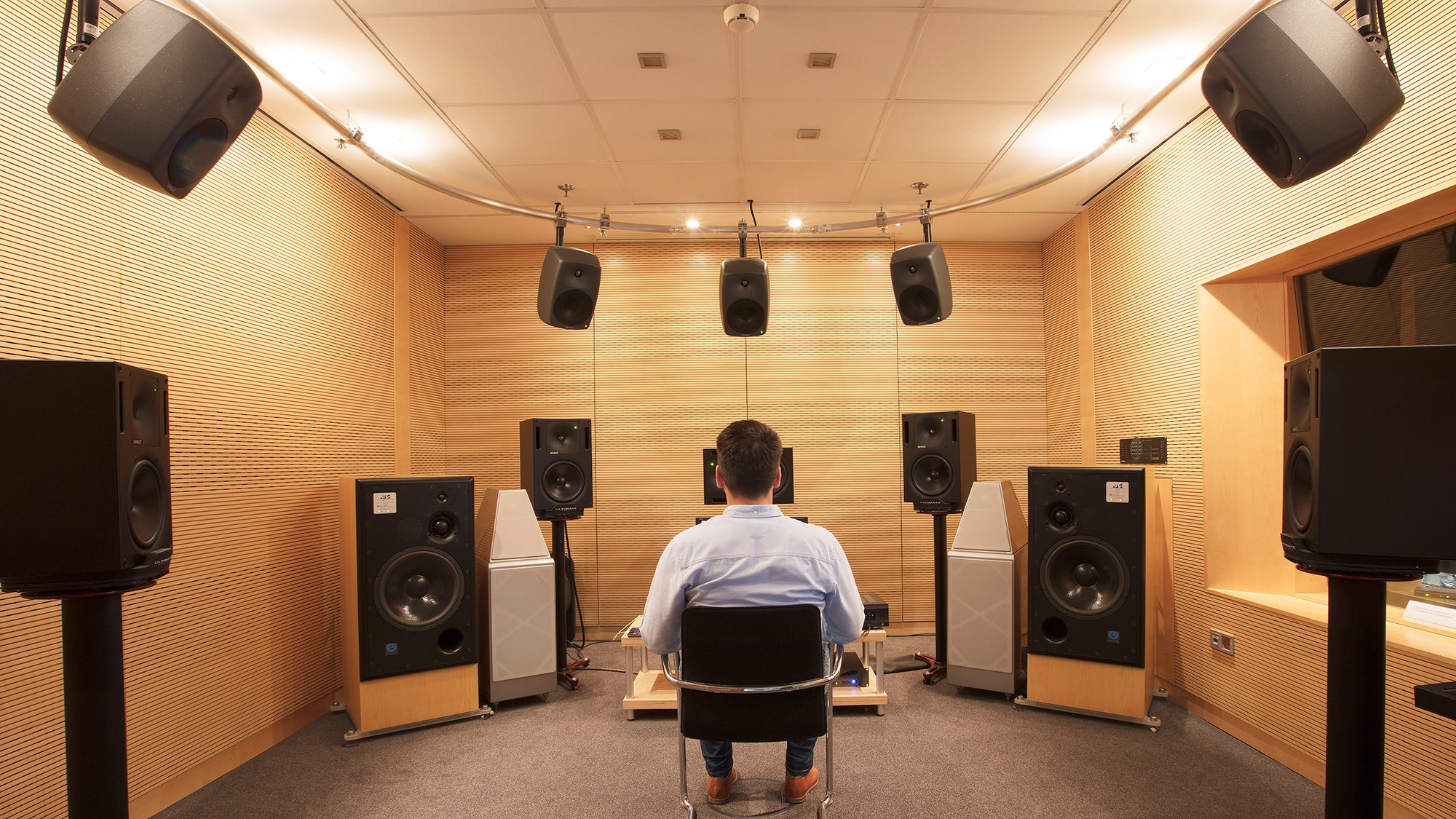
Credit: Audi | The audio reference room at Audi’s Ingolstadt HQ
Audi uses this area to find out what music should really sound like; that’s why Audi’s sound team call it a “reference room”. Top audio experts at the company will listen to detailed orchestral music – and even The Eagles’ Hotel California, I learned – to understand exactly how specific instruments sound across audio channels. They’ll test extensively, in stereo, 5.1, and even 3D to capture precisely what a song should sound like.
Then, those same soundsters sit in a car – like the new A8, for instance – and listen to the exact same songs again, using the studio experience as a reference. By repeating this process over and over, the team is able to tune the speaker systems in the car to sound as close as possible to the original audio.
Kitting out the car is like a ‘Jamie Oliver meal’, apparently
Before Audi even gets to the tuning stage, the position of the speakers has to be determined.
This involves working closely with the design team, and realising how the sound system will fit with existing concepts for the car.
“We start very early with concepts,” says Wolfram Jähn, Project Manager for Sound Development on the Audi A8, speaking to Trusted Reviews, “and we make simulations of the loudspeaker in the car. Before the first prototype is built, we can say whether it’s a good installation in the car or not.”
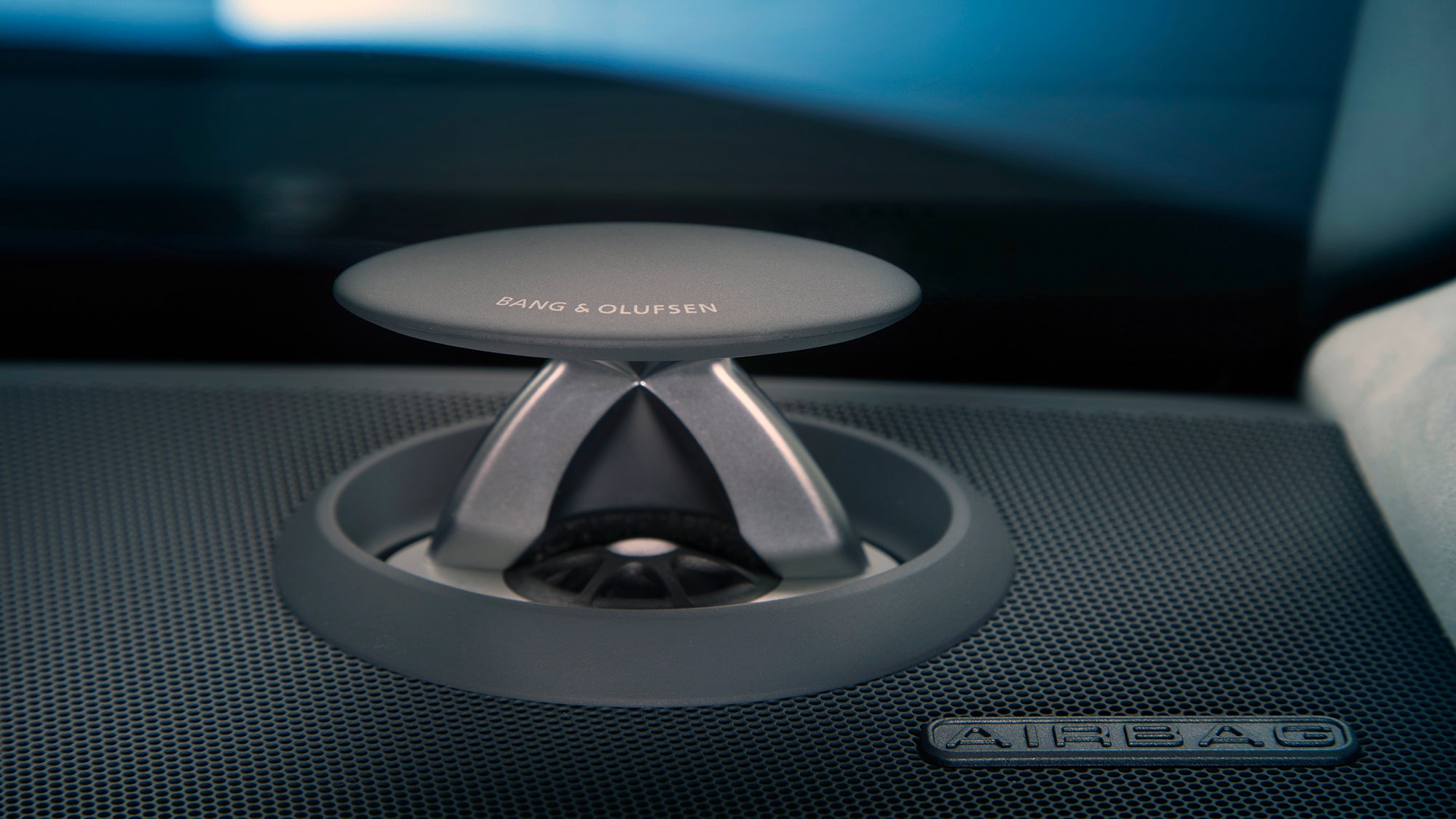
Credit: Audi
At this stage, Audi will use these computerised simulations to tinker with things like speaker position, radiation, and vibration – as well as choosing the correct loudspeaker. Doing the simulations is important because, as Jähn points out, “if you have any problem, like a woofer in a wrong position, you can’t change it later”.
Then, once the speakers are placed into the vehicle, the tuning begins: “The tuning is correcting what you cannot avoid. Reflections, absorptions, wrong positions for loudspeakers – so you have to increase the level at certain frequencies.”
This tuning process takes at least three months for the advanced sound systems, according to Jähn, although it’s quicker for cheaper, more basic systems.
“Then you put everything together,” Jähn tells Trusted Reviews. “When Jamie Oliver is making a meal, and he is buying poor ingredients as a five-star chef, he can’t make a good a meal. It’s the same. In the end, it’s a lot of taste. You really have to decide how should the sound system sound.”
He continues: “It’s very typical for sound systems that there’s not one point that’s the winning thing. The importance for sound systems in cars is it’s a chain of elements that have to work together, and then you have a strong chain. If you have a weak part, then it will make the whole system weak.”
Related: Jaguar E-Pace
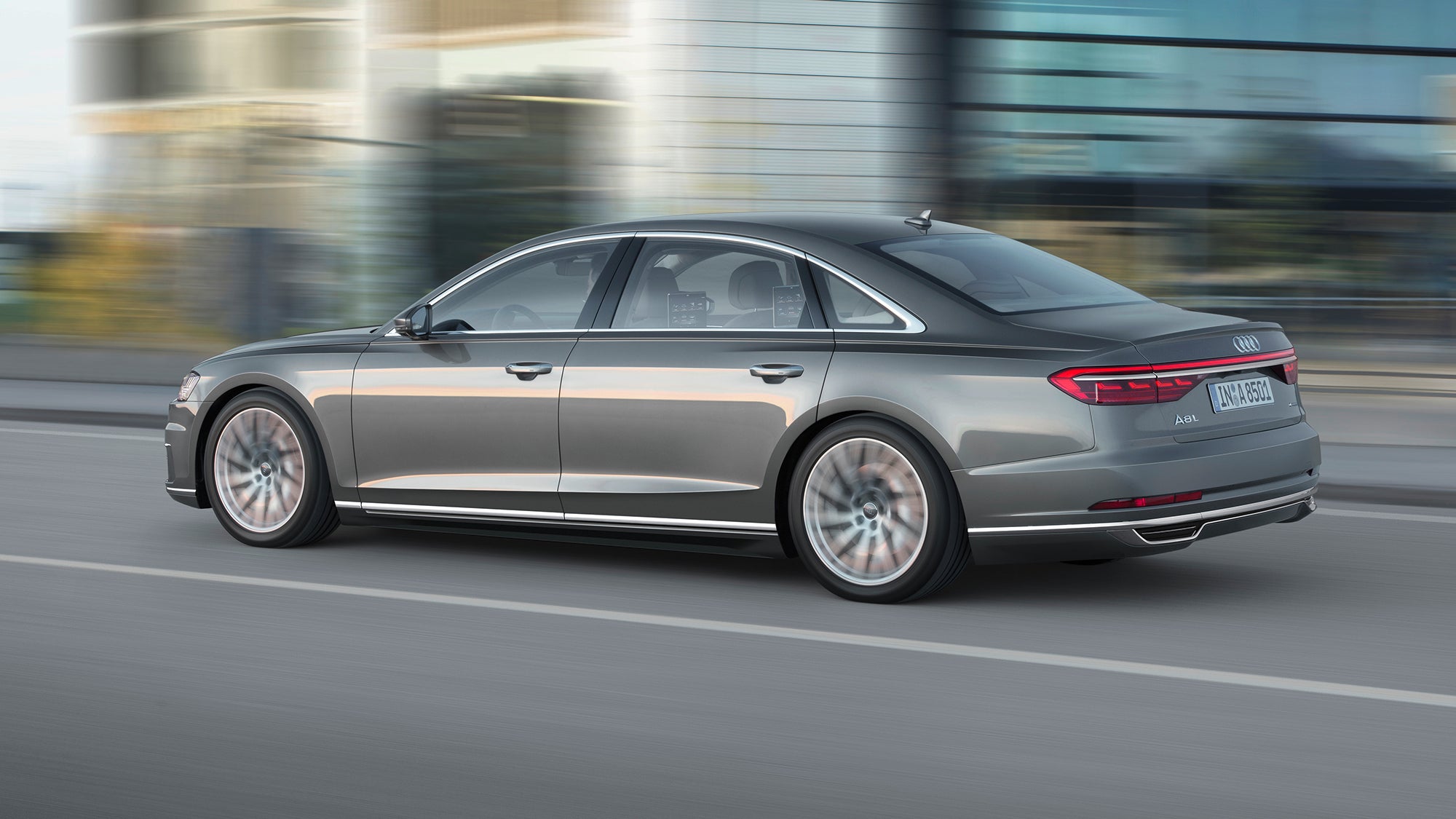
Credit: Audi
Destroying speakers is part of the fun
One of the key ingredients in Audi’s recipe for great sound is a quality roster of loudspeakers. Christian Rückert from Audi’s loudspeaker development team explains how they will go through countless speakers in a bid to find the perfect designs for a given car.
To do this, Audi will conduct various tests, including checking the strength and proportions of specific speaker components. Exact benchmarks must be met, due to the demanding nature of a car environment. Audi even has to make sure that its speakers are designed to stay sufficiently cool, to prevent issues with audio.
“The voice coil is wound copper wire,” I’m told. “If it’s getting hotter, the resistance is changing, and we get less power from the amplifier. It’s limited power.”
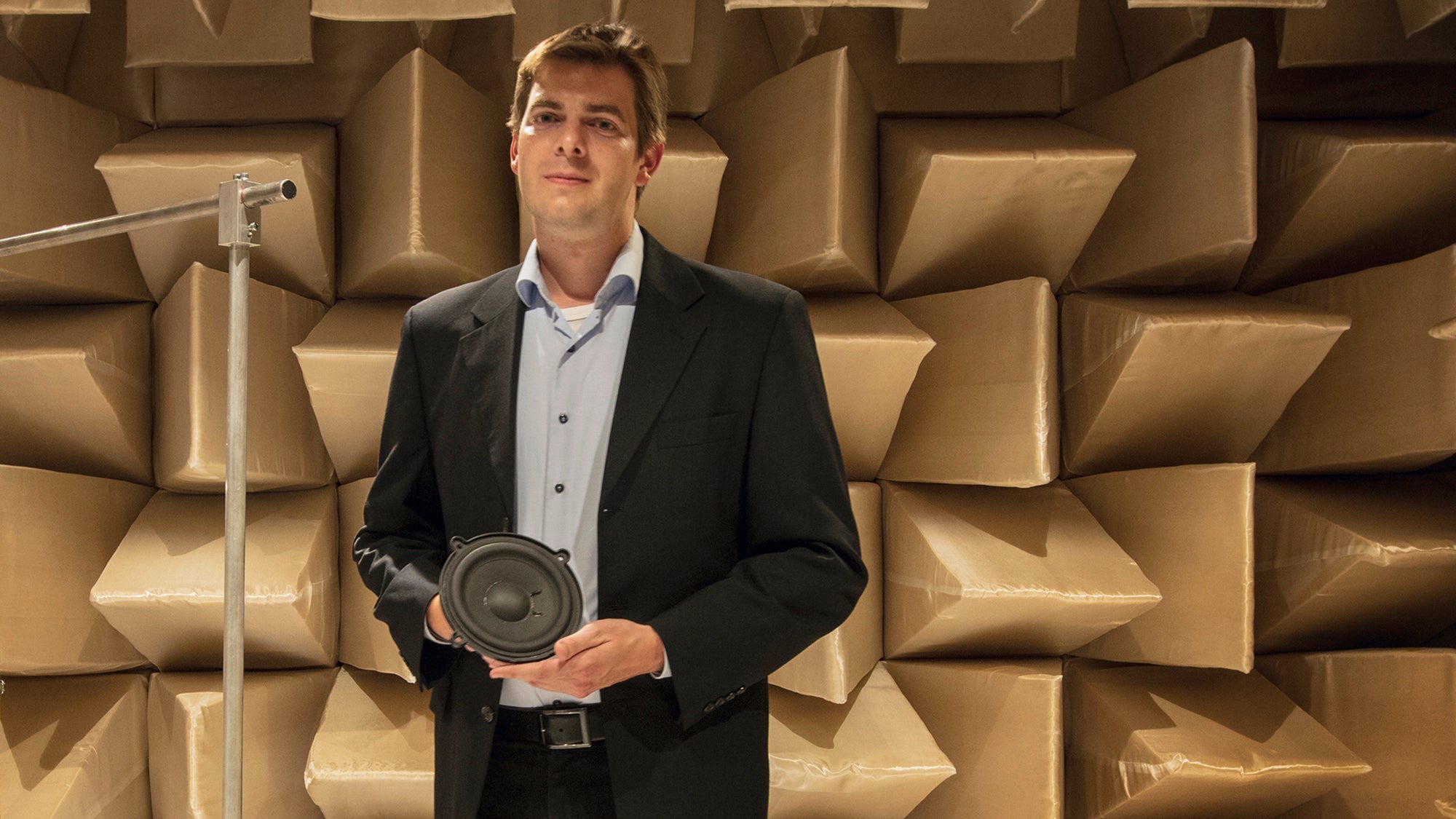
Credit: Audi | Christian Rückert in Audi’s anechoic chamber
He says temperature can cause even more problems with high-frequencies speakers – so-called “tweeters”: “If you have a tweeter, for example, inside is ferrofluid – it’s a magnetic oil. At low temperatures, it’s really hard, and at high temperatures, it’s fluid. So it’s changing dramatically the performance of the movement of the voice coil.”
Rückert explains that this is one of the key differences between choosing speakers for a home hi-fi system, and selecting car-grade speakers: “One is located at home at 23 degrees Celcius; here we are located in a car, going from -40 degrees up to 85 degrees – that’s our working range. So we cannot choose all components identically, but our goal is to have the high-end performance of those speakers in the car.”
“Our goal in development is to push it to the limits. As much as power in the end, as possible,” he adds.
The tests, then, are unsurprisingly rigorous. So rigorous, in fact, that Audi regularly ends up breaking speakers simply by pushing them too hard.
“We can destroy the speaker,” Rückert tells Trusted Reviews. “In the test department, it’s normal. Of course we are breaking the speakers. In the car, it should not happen. We have limiters inside, experts for tuning the car and they limit it to a certain level.”
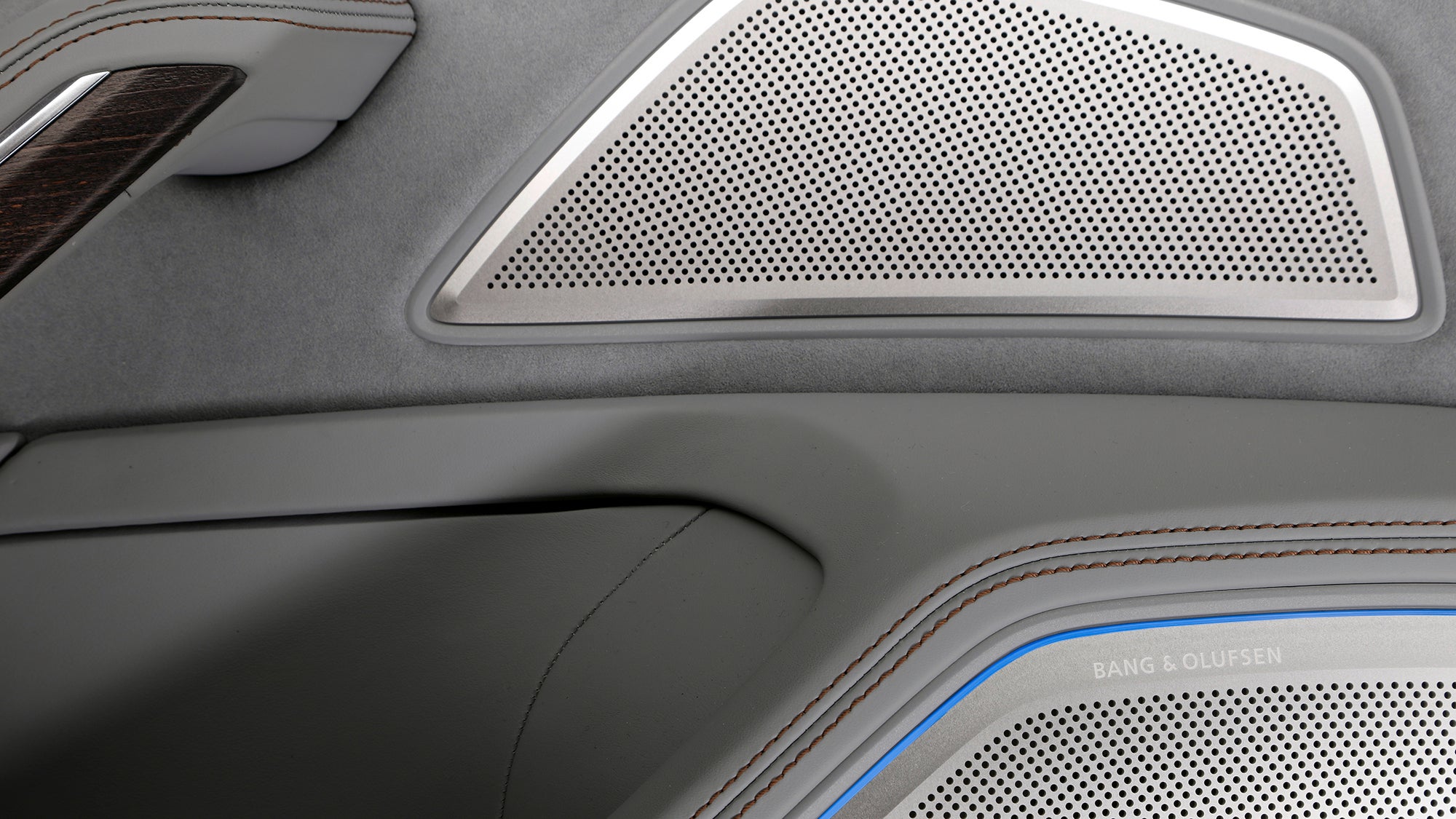
Credit: Audi
“Using different signals, there are ways to kill every speaker, everywhere,” Rückert goes on. “You just need to know how. So the worst thing for a subwoofer is to put high-frequency signals. At high frequencies, there is no movement – and movement is important for cooling.”
“You can kill the speaker. If you know how, it’s easy,” he adds, cheerfully.
The Audi A8 sounds better depending on where you sit
No system is perfect, and certainly not in the messy acoustic environment of a car. That’s why Audi’s audio systems sound different depending on where you’re sitting in the car. The end goal is overall audio accuracy, according to project manager Jähn:
“We really look for clarity, honesty. It must be a system which is not taking away something, but not adding something which is not there. Really giving a pure sound. Nothing more, nothing less.”
Using the infotainment system (available in both the front and back of the car), it’s possible to drivers and passengers to manually adjust where the music sounds best in the car. Due to the design of the Audi A8, I’m told the best possible sound is available in the back – that’s thanks to less cluttered surfaces and a more broad acoustic space. But you can shift the quality of the sound space around the car simply by using on-board controls, as Jähn explains:
“It’s very difficult for the acoustic to have a good sound in all places. You have to make compromise. Especially in this car, normally the VIP is sitting in the back.”
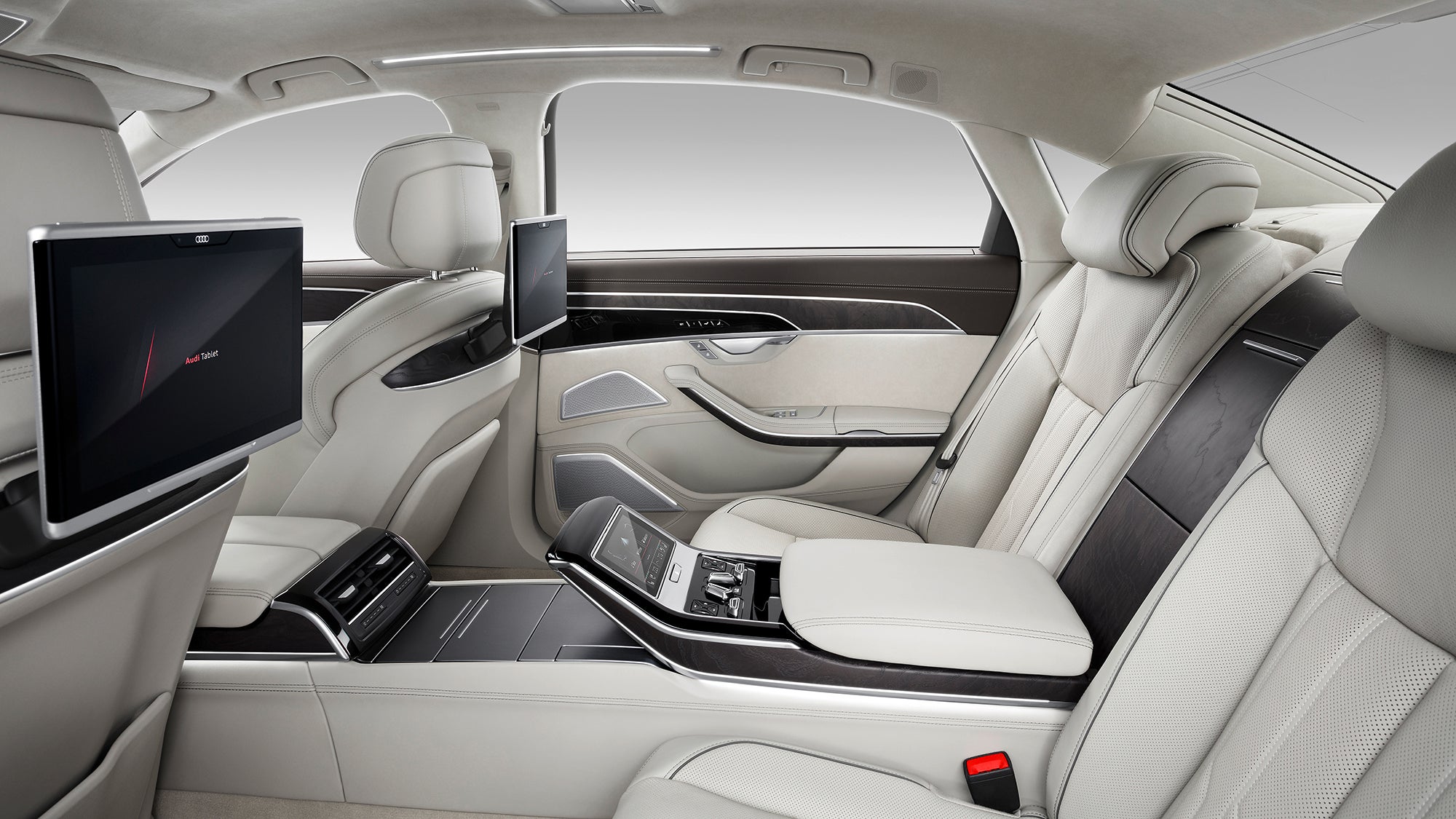
Credit: Audi
He also tells me that the A8L – the long-wheelbase version of the car – has even better sound than the standard version, simply by virtue of the fact that it offers a larger acoustic space to work with.
Alongside the sound location controls, you can also activate a dedicated movie mode. This centralises the audio around the centre-console display, which means it feels “really like a cinema”, according to Jähn. He also says that the sub-woofer in the back is used for a low-frequency effect during movies “so when Godzilla comes, you can feel it”.
The Audi sound team clearly has a passion for great audio, and it’s patently obvious that a tremendous amount of work goes into developing in-car sound systems. The nuance of the audio might not match the studio setting, but it’s an incredible feat of audio engineering given the tough car environment.
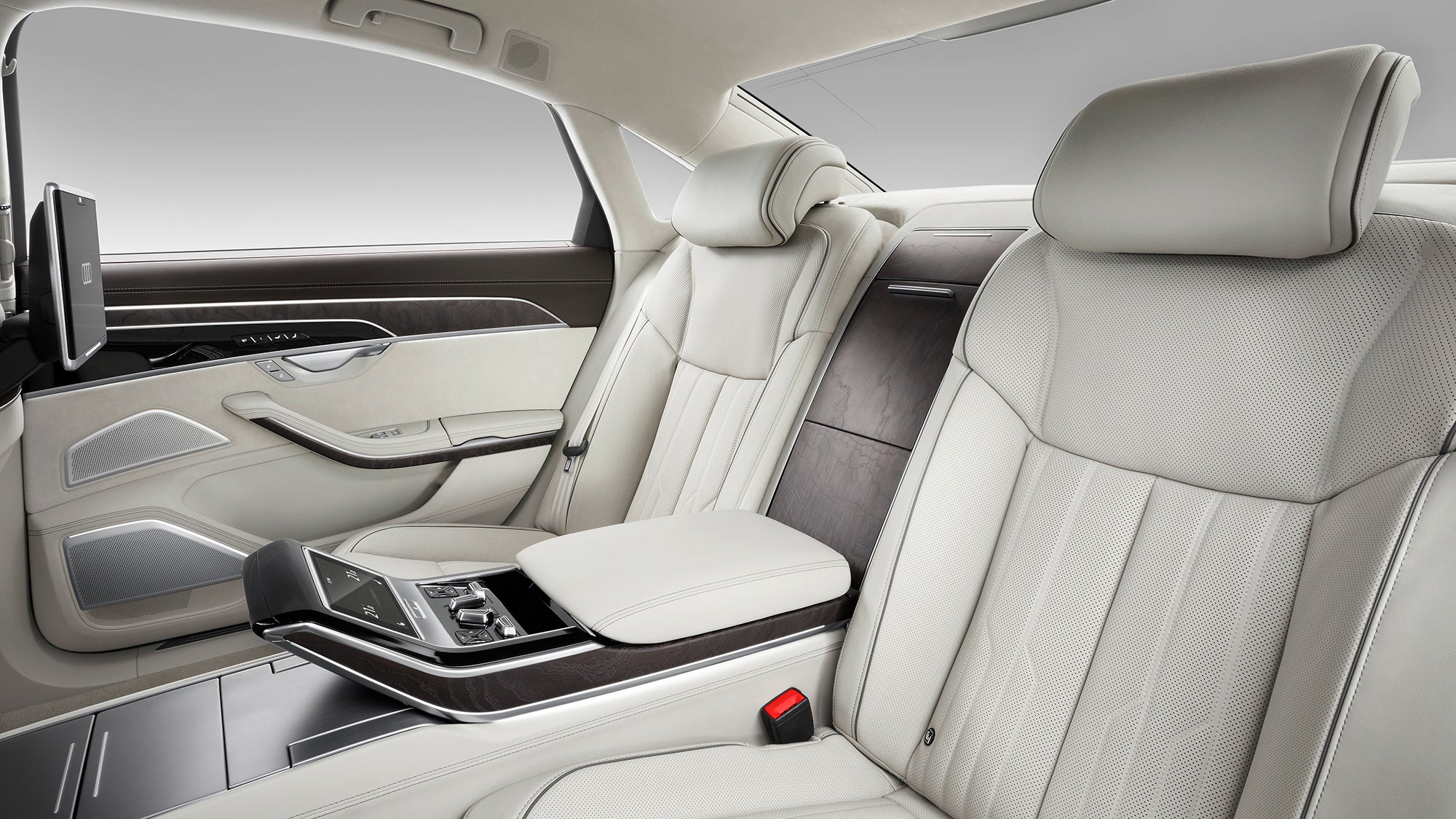
Credit: Audi
The process may be laborious, but the end result is thrilling. Fortunately for Audi, Jähn tells me it’s pretty easy to work out whether they’ve perfected the audio or not:
“When you put the music in [the car] and you’re not starting to shake and it doesn’t touch you emotionally, then we have done something wrong.”
“In the end, the emotion in the music has to be in the car,” he continues.”Then it’s a good system.”
The new Audi A8 2017 will be released for UK sale in October, and is expected to start from just under £70,000.
Related: Kia Sportage review
Which of your cars had the best sound system? Let us know in the comments.


